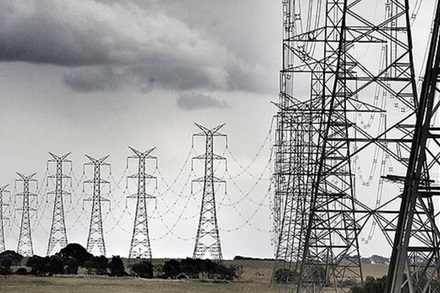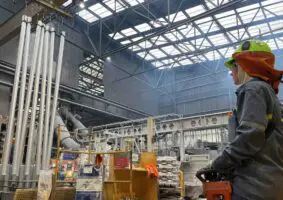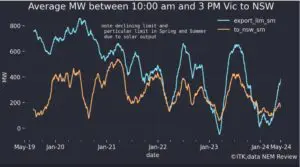The National Energy Efficiency Conference, taking place in Melbourne next week, is an annual opportunity for Australia’s energy efficiency sector to come together to reflect on the year that was, and map out where we are going as an industry.
And what a year it has been. In my monthly update to Energy Efficiency Council members back in March 2017, I wrote the following:
We are moving into a new phase of Australia’s energy debate. Public anger about skyrocketing energy costs and falling reliability is at boiling point. The pain being felt by Australia’s large energy users – caught in a pincer movement between rising gas and electricity prices – is visceral. Unfortunately, the political imperative for a quick fix is colliding with an energy system whose defining characteristic is institutional inertia.
This diabolical set of circumstances is the fundamental dynamic of 2017, and it’s the driver of everything that’s happening on the demand side, in both the commercial market and the policy sphere.
The market for smart energy management in Australia is taking off, as energy users act to take control of their energy costs.
The Energy Efficiency Council’s members are reporting that businesses around the country are considering energy efficiency, demand management, and onsite generation in a completely new light; as methods for mitigating risk in an increasingly volatile energy market.
This renewed focus, coupled with reduced payback periods on many investments, is kick-starting a lot of conversations.
This ramp up in activity in the commercial market has been mirrored by a lot of action on the policy front. Let me step you through just some of the milestones from the last twelve months:
- The COAG Energy Council signed off on 49 of the 50 recommendations from the Finkel Review. People skip over this, but this was a very significant package of reforms, notwithstanding the Clean Energy Target falling by the wayside. It included the creation of a new Energy Security Board, and an agreement that a rule change that allows demand response to compete in the wholesale energy market will be put to COAG Energy Council by mid-2018.
- AEMO and ARENA moved to establish a $37 million pilot program that is securing 143 megawatts of demand response capacity by this summer, with the aim of heading off outages caused by extreme weather events and equipment failure.
- Victoria added another $20m to the Greener Government Buildings program, which upgrades the efficiency of schools and hospitals, taking funding for the program to $53 million. They also announced a raft of new energy efficiency programs for Victorians, taking the funding for businesses and household energy efficiency to $55 million over four years.
- NSW released a $112 million energy affordability package with a big focus on energy efficiency for households and small business.
- South Australia announced $31 million over two years to support up to 500 large businesses to use energy more efficiently and productively.
- The Queensland Government released its new Climate Transition Strategy, which for the first time hardwired proper consideration of demand side opportunities into the state’s energy and carbon policy.
Things are happening – in the case of the energy market reform agenda, a lot quicker than I expected – and I don’t think 2017 is done in terms of announcements on demand side policy.
Our international keynote speaker at next week’s Conference, California Energy Commissioner Andrew McAllister, expressed some bemusement in RenewEconomy last week at Australia’s obsession with the debate over coal versus renewables, and our lack of focus on the demand side opportunity. It’s a very fair critique.
However it’s worth noting there isn’t a government in the country that isn’t looking carefully at what more it can do on the demand side.
There is a simple reason for that. Governments have realised that energy management is their best option to help homes and businesses quickly bring down their energy bills, because there aren’t any credible choices for quickly lowering the unit cost of gas or grid-supplied electricity.
When it comes to gas, the options for boosting supply in the short term are limited. In the long term, even if additional gas supply is found, gas prices are now linked to international markets and experts expect the unit cost of gas to stay at more than double the historic price.
On electricity, even if governments immediately agreed to a swathe of reforms, including an aggressive National Energy Guarantee and better regulation of electricity networks, it would likely be years before these moves drive a major reduction in the unit cost of electricity.
However, energy bills are a function of unit cost and volume; if unit cost is intractable, take a look at volume. Governments could help energy users save billions on their energy bills if they ramped up their efforts on driving smart energy management.
Of course we need to do everything we can to address our supply side issues as well. However even here there is an imperative to increase our attention on the demand side. CSIRO’s Low Emissions Technology Roadmap – released in June, but largely missed in the wall to wall coverage of the Finkel Review – modelled the costs of various approaches to transitioning our energy system over the next fifteen years.
The report included two scenarios that modelled ramping up our ambition and doubling Australia’s energy productivity by 2030. CSIRO found that ambitious energy productivity:
- Left householders with lower energy bills than under any other scenario
- Resulted in lower wholesale prices, because less expenditure is needed on new generation assets
- Gave the energy sector some breathing space to make an orderly transition to low carbon generation.
Short version; we ignore the demand side at our peril.
It’s a been a busy twelve months, but we’ve only just begun. Australia’s energy system is in crisis. Our nation’s energy management experts – both technical experts in business and policymakers in government – are a crucial part of the solution. It’s time for us to step up.
Luke Menzel is CEO of the Energy Efficiency Council, the peak body for Australia’s energy efficiency experts. The National Energy Efficiency Conference will take place in Melbourne next week, on Monday 20th and Tuesday 21st November.










